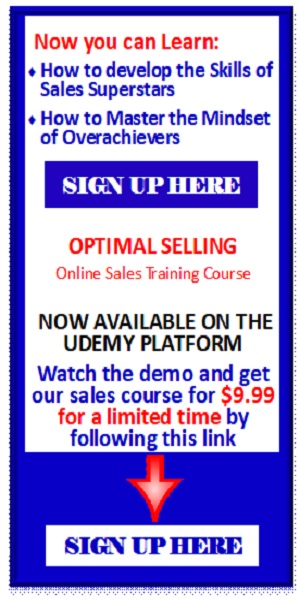Be optimistic about the outcome of the sales process but you should be pessimistic about every step along the way. Optimistic people are generally happier and more successful. But being overly optimistic can get you into trouble. Successful salespeople are pessimistic enough to anticipate problems that might occur in the sales cycle as they move the prospect through the sales steps from prospecting to closing. An appropriate amount of pessimism allows them to see problems that might occur and ask the right questions or take the right steps to move the prospect around any obstacles to the sale that might occur. When the salesperson is overly optimistic, they think everything is A-OK and run the risk of being blindsided by events or obstacles that they should have seen coming. So be a little pessimistic, not about the outcome, but about the things that could go wrong with the sale.
If you have a sales question you would like to discuss follow the link to schedule a call:
https://calendly.com/dancaramanico/callwithdan


